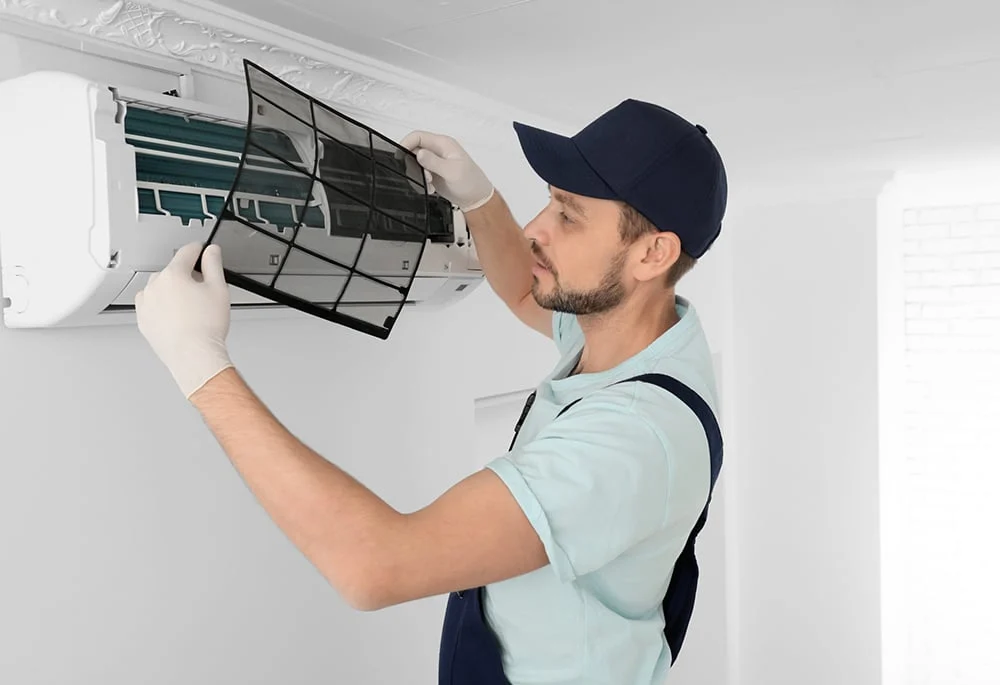Most homeowners focus on picking the right air conditioning unit, comparing energy ratings and brand names for weeks. But here’s what they miss: even the most efficient AC system becomes a costly mistake when installed incorrectly.
Poor AC installation doesn’t just mean higher energy bills or inconsistent cooling. It can void your warranty, create safety hazards, and turn what should be a long-term investment into an expensive headache. The difference between a professional installation and a shortcuts-taken job often determines whether your system lasts 8 years or 20.
Understanding what goes into proper AC installation helps you make informed decisions, avoid common pitfalls, and ensure your new system delivers the comfort and efficiency you’re paying for.
The Hidden Costs of Poor AC Installation
When an AC installation goes wrong, the consequences extend far beyond immediate discomfort. Incorrectly sized units cycle on and off frequently, driving up electricity costs by 20-30% compared to properly installed systems. Improper refrigerant lines create leaks that require expensive repairs and harm the environment.
Electrical connections done hastily or incorrectly pose fire risks and can damage your home’s electrical system. Ductwork that’s poorly connected wastes conditioned air, forcing your system to work harder while failing to maintain consistent temperatures throughout your home.
Perhaps most frustrating, many manufacturers void warranties when installation doesn’t meet their specifications. This leaves homeowners responsible for repair costs that should have been covered, sometimes just months after installation.
What Professional AC Installation Involves
Professional AC installation requires far more than connecting a few pipes and plugging in the unit. Skilled technicians start by calculating your home’s exact cooling load, considering factors like square footage, insulation quality, window placement, and local climate conditions.
The refrigerant lines must be properly sized, sealed, and tested for leaks. Even small leaks reduce efficiency and can cause complete system failure over time. Electrical connections require precise wiring that meets local codes and manufacturer specifications.
Ductwork inspection and modification often become necessary during installation. Existing ducts may need sealing, resizing, or rerouting to work effectively with your new system. The condensate drain must be properly connected and tested to prevent water damage.
System commissioning involves testing all components, calibrating the thermostat, and ensuring refrigerant levels are exactly right. This final step often separates professional installations from amateur attempts.
Common Installation Mistakes That Cost Homeowners
Oversized units represent one of the most frequent and expensive installation errors. Contractors sometimes install larger systems, thinking bigger means better, but oversized units short-cycle, creating temperature swings and excessive humidity while wasting energy.
Improper refrigerant handling damages both your system and the environment. DIY installations or inexperienced contractors often overcharge or undercharge systems, leading to reduced efficiency and premature component failure.
Inadequate electrical work creates ongoing problems. Undersized breakers, improper grounding, or loose connections cause system malfunctions and potential safety hazards that may not become apparent until months later.
Skipping permit requirements might seem like a time-saver, but unpermitted work creates problems when selling your home and may not meet safety codes. Many insurance companies also refuse claims related to unpermitted electrical work.
Choosing the Right Installation Professional
Licensed contractors carry insurance and understand local building codes, providing protection you can’t get from unlicensed installers. Ask to see current licenses and insurance certificates before allowing any work to begin.
Experience with your specific system type matters significantly. Different brands and system configurations require specialized knowledge, so choose contractors familiar with your equipment.
Written estimates should include detailed breakdowns of labor, materials, and any additional work needed. Be wary of contractors who provide only verbal estimates or seem reluctant to document their proposed work.
References from recent customers offer insights into work quality and customer service. Reliable contractors readily provide contact information for previous clients and stand behind their work with solid warranties.
Permits, Codes, and Legal Requirements
Most municipalities require permits for AC installation, ensuring work meets safety standards and building codes. Professional contractors handle permit applications and schedule required inspections as part of their service.
Electrical codes specify requirements for circuit sizing, grounding, and disconnect switches. These aren’t suggestions—they’re legal requirements designed to prevent fires and electrical hazards.
Refrigerant handling requires EPA certification due to environmental regulations. Only certified technicians can legally purchase, handle, and dispose of refrigerants used in AC systems.
Building codes may dictate equipment placement, clearance requirements, and structural considerations. Violating these codes can result in fines and forced removal of improperly installed equipment.
The Long-Term Impact of Quality Installation
Properly installed AC systems typically last 15-20 years with regular maintenance, while poorly installed units often fail within 8-10 years. This difference represents thousands of dollars in replacement costs and lost efficiency over time.
Energy efficiency depends heavily on installation quality. Well-installed systems achieve their rated SEER values, while poor installations may operate 20-40% less efficiently than rated capacity.
Maintenance becomes easier and less expensive when systems are installed correctly. Technicians can access components easily, and properly installed systems experience fewer breakdowns requiring emergency repairs.
Home value benefits from professional installation with proper permits and documentation. Future buyers gain confidence knowing major systems were installed correctly and up to code.
Making Your AC Installation Investment Count
AC installation is a critical investment that directly impacts your home’s comfort, energy efficiency, and long-term system reliability. To make that investment count, start by thoroughly researching contractors—verify licenses, insurance coverage, and reputation through recent customer reviews across trusted platforms.
Obtain multiple detailed quotes, comparing not only pricing but also the scope of work, materials used, and warranty coverage. Lower bids may skip essential steps or use subpar components that compromise long-term performance.
Strategically time your installation—spring and fall typically offer better contractor availability and more competitive pricing than peak summer months. Throughout the process, keep records of permits, warranties, and installation documentation to support future maintenance or warranty claims.
Investing in professional AC installation ensures that your system operates efficiently, safely, and reliably for years to come—saving you from costly issues down the road and delivering consistent indoor comfort.

